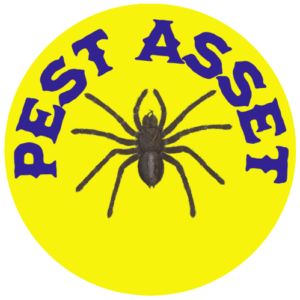Introduction
Ohio’s Bug Diversity
Ohio is home to a rich and diverse insect population, with a plethora of species coexisting in its various ecosystems. This diversity can sometimes lead to confusion when trying to differentiate between look-alike bugs. In this comprehensive guide, we will explore Ohio’s fascinating world of insects, with a focus on those often mistaken for one another.
Ohio’s Landscape: A Bug’s Paradise
The state of Ohio boasts a diverse landscape, encompassing everything from lush forests and fertile farmland to bustling cities. This varied terrain provides an ideal environment for insects of all types to thrive. Insects are a vital component of Ohio’s ecosystem, playing crucial roles in pollination, decomposition, and food chains.
Ohio’s Ecological Diversity
Ohio’s unique ecological diversity further contributes to the abundance of insect life. From the shores of Lake Erie to the Appalachian Plateau, the state offers a range of habitats for bugs to call home. Understanding the ecological context in which these look-alike bugs are found can be invaluable for accurate identification and pest management.
-
- Stink Bugs vs. Leaf-Footed Bugs
1.1 Similarities and Confusions

Stink bugs and leaf-footed bugs are often confused due to their similar size, shape, and behavior. Both belong to the family Pentatomidae and are characterized by their shield-shaped bodies. Understanding their shared characteristics is key to distinguishing them.
1.2 Key Differences
To differentiate between stink bugs and leaf-footed bugs, it’s essential to look for key differences. Stink bugs emit a foul odor when threatened, while leaf-footed bugs do not. Moreover, leaf-footed bugs have distinctive leaf-like expansions on their hind legs, making them stand out.
-
- Ladybugs vs. Asian Lady Beetles
2.1 The Iconic Ladybug

Ladybugs, with their red shells and black spots, are a symbol of luck and good fortune. These tiny beetles are known for their role as natural pest controllers and are a common sight in Ohio gardens.
2.2 The Intriguing Asian Lady Beetle
Asian lady beetles, closely resembling ladybugs, can often be mistaken for their more famous counterparts. They are slightly larger and typically have an “M” or “W” shape on their pronotum, distinguishing them from ladybugs. Moreover, Asian lady beetles can be more aggressive and may emit a yellowish fluid when disturbed.
-
- Carpenter Ants vs. Termites
3.1 The Wood-Damaging Dilemma

Carpenter ants and termites are both known for their destructive impact on wooden structures, making them a concern for homeowners. However, their appearance and behavior can be quite different.
3.2 Telltale Signs
To distinguish between carpenter ants and termites, examine their physical characteristics and behaviors. Carpenter ants have segmented bodies, elbowed antennae, and varying colors (black, red, or a combination). In contrast, termites have straight, bead-like antennae and are generally light in color, often translucent. Additionally, carpenter ants create smooth tunnels in wood, while termites leave behind mud-like galleries.
-
- Bees vs. Wasps
4.1 Pollinators in Yellow and Black

Bees and wasps are crucial pollinators in Ohio’s ecosystem. Their similar yellow and black coloration often leads to confusion, but a closer look reveals significant differences.
4.2 A Closer Look
While both bees and wasps share yellow and black markings, bees are generally more robust and furry. Wasps, in contrast, are slimmer and have fewer hairs. Another important distinction lies in their diet: bees feed on nectar and pollen, whereas wasps are carnivorous, preying on insects and other arthropods.
-
- Bed Bugs vs. Bat Bugs
5.1 Household Pests in Disguise

Bed bugs are notorious for their bites and infestations, but Ohio residents may also encounter bat bugs, which closely resemble them. Understanding their differences is essential for proper pest management.
5.2 Host Specificity
The primary difference between bed bugs and bat bugs lies in their host preference. While their bites are similar, bed bugs primarily feed on humans, whereas bat bugs infest homes near bat roosts and feed on bats. Identifying the source of an infestation is key to effective control.
-
- Fireflies vs. Soldier Beetles
6.1 Bioluminescent Beauties

Fireflies, also known as lightning bugs, are fascinating insects known for their enchanting bioluminescent displays. Their distinct appearance often leads to confusion with soldier beetles.
6.2 The Magical Glow
Fireflies have elongated elytra that extend all the way to their abdomen, while soldier beetles have exposed abdominal segments. Additionally, only fireflies emit a soft, magical glow during summer nights, creating a mesmerizing spectacle.
-
- Bumblebees vs. Carpenter Bees
7.1 Robust Flyers

Bumblebees and carpenter bees are large, robust insects that can appear similar at first glance. However, examining specific features can help differentiate them.
7.2 The Pollen Basket Test
To distinguish between bumblebees and carpenter bees, look for the presence of pollen baskets on the hind legs. Bumblebees carry pollen on their hind legs in specialized structures known as corbiculae, while carpenter bees lack this feature. Additionally, bumblebees are social insects, while carpenter bees are solitary.
-
- Cicadas vs. Annual Cicadas
8.1 Songs of the Cicadas

Cicadas are known for their distinctive songs and periodic emergences. However, Ohio is also home to annual cicadas that closely resemble them but have different emergence cycles.
8.2 Emerging Cycles
While both cicadas and annual cicadas have large eyes and wings, the key difference lies in their emergence cycles. Annual cicadas appear every year, while periodical cicadas emerge every 13 or 17 years, making their appearances less frequent and more memorable.
Conclusion
Understanding the subtle differences between these look-alike bugs is essential for effective pest management and a deeper appreciation of Ohio’s entomological wonders. The next time you encounter a mysterious bug in your garden or home, use this guide to unveil the secrets of Ohio’s diverse insect world.l
Lorem ipsum dolor sit amet, consectetur adipiscing elit. Ut elit tellus, luctus nec ullamcorper mattis, pulvinar dapibus leo.



